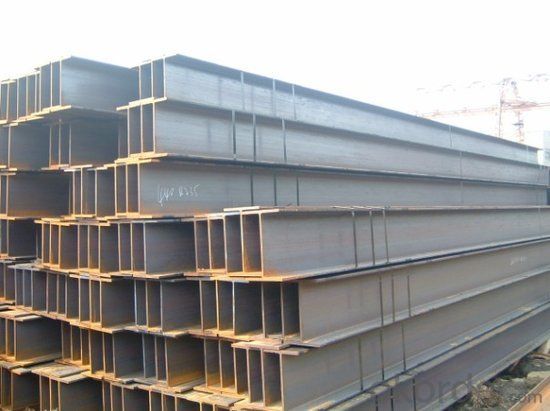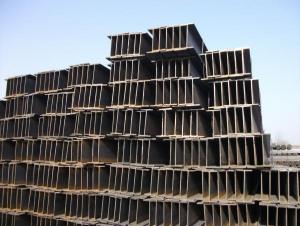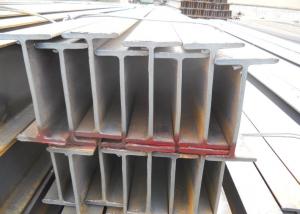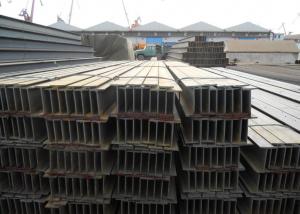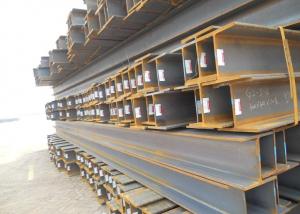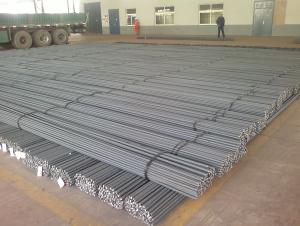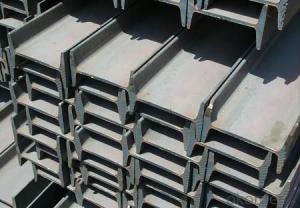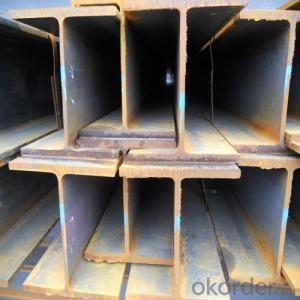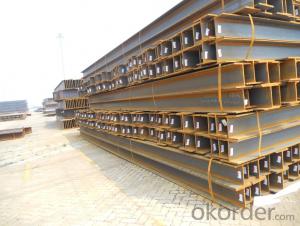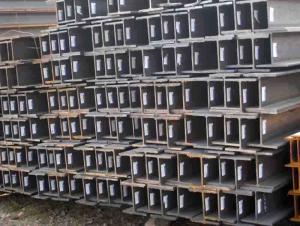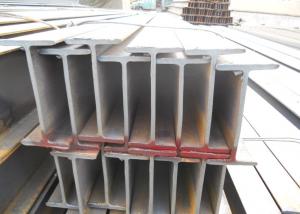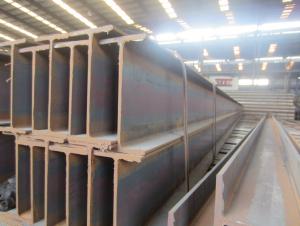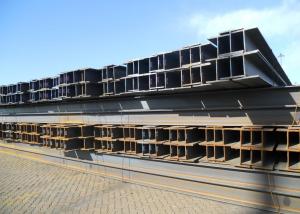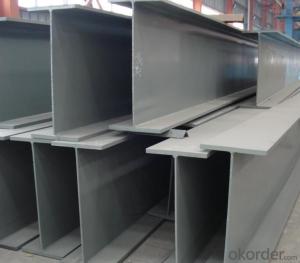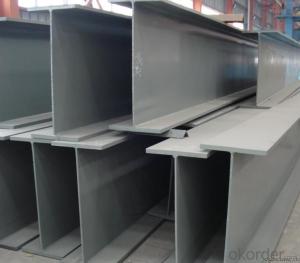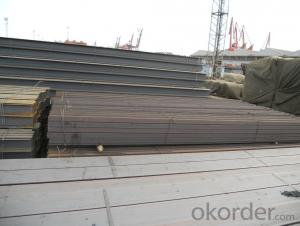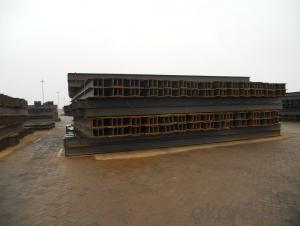Hot Rolled H Section Beam
- Loading Port:
- China Main Port
- Payment Terms:
- TT or LC
- Min Order Qty:
- 100 m.t.
- Supply Capability:
- 10000 m.t./month
OKorder Service Pledge
OKorder Financial Service
You Might Also Like
Product Description:
OKorder is offering Hot Rolled H Section Beam at great prices with worldwide shipping. Our supplier is a world-class manufacturer of steel, with our products utilized the world over. OKorder annually supplies products to African, South American and Asian markets. We provide quotations within 24 hours of receiving an inquiry and guarantee competitive prices.
Product Applications:
Hot Rolled H Section Beam are ideal for structural applications and are widely used inindustrial plants, civil construction, municipal works, oil platforms, bridges, flatbed beams, electrified railway power stand, railway bridges and other light steel structure, super-light H-beam is ideal for containers, mobile homes , all kinds of garage, box-type trains, electrical bracket, various venues, small villa manufacturing etc.
Product Advantages:
OKorder's Hot Rolled H Section Beam are durable, strong, and wide variety of sizes.
Main Product Features:
· Premium quality
· Prompt delivery & seaworthy packing (30 days after receiving deposit)
· Can be recycled and reused
· Mill test certification
· Professional Service
· Competitive pricing
Product Specifications:
Manufacture: Hot rolled
Grade: SS400, Q235,A36,S235JR
Standard: JIS G3101, GB STANDARD
Certificates: ISO, SGS, BV, CIQ
Length: 12m, as per customer request
Packaging: Export packing, nude packing, bundled
H Type Steel Size and Theoretical Weight | |||||
Size | Theoretical Weight | Size(mm) | Theoretical Weight | Size(mm) | Theoretical Weight |
(mm) | (kg/m) | (kg/m) | (kg/m) | ||
100*50*5*7 | 9.3 | 250*125*6*9 | 29 | 446*199*8*12 | 65.1 |
100*100*6*8 | 16.9 | 250*250*9*14 | 71.8 | 450*200*9*14 | 74.9 |
125*60*6*8 | 13.1 | 294*200*8*12 | 55.8 | 482*300*11*15 | 110.8 |
125*125*6.5*9 | 23.6 | 298*149*5.5*8 | 32 | 488*300*11*18 | 124.9 |
148*100*6*9 | 31.1 | 340*250*9*14 | 36.7 | 496*199*9*14 | 77.9 |
150*75*5*7 | 14 | 300*150*6.5*9 | 93 | 500*200*10*16 | 88.1 |
150*150*7*10 | 20.7 | 300*300*10*15 | 78.1 | 582*300*12*17 | 132.8 |
175*90*5*8 | 18 | 346*174*6*9 | 41.2 | 588*300*12*20 | 147 |
175*175*7.5*11 | 40.4 | 350*175*7*11 | 49.4 | 596*199*10*15 | 92.4 |
194*150*6*9 | 29.9 | 350*350*12*19 | 134.9 | 600*200*11*17 | 103.4 |
198*99*4.5*7 | 17.8 | 390*300*10*16 | 104.6 | 700*300*13*24 | 181.8 |
200*100*5.5*8 | 20.9 | 396*199*7*11 | 56.1 | 800*300*14*26 | 206.8 |
200*200*8*12 | 49.9 | 400*200*8*13 | 65.4 | 900*300*16*28 | 240.1 |
244*175*7*11 | 43.6 | 400*400*13*21 | 171.7 | ||
248*124*5*8 | 25.1 | 440*300*11*18 | 120.8 | ||
Length:12meters | |||||
FAQ:
Q1: How soon can we receive the product after purchase?
A1: Within three days of placing an order, we will arrange production. The normal sizes with the normal grade can be produced within one month. The specific shipping date is dependent upon international and government factors, the delivery to international main port about 45-60days.
Q2: How many tons of steel products could be loaded in containers?
A2: Usually the steel products are delivered by bulk vessel because of the large quantity and the freight. However, there are no bulk vessel enter some seaports so that we have to deliver the cargo by containers. The 6m steel product can be loaded in 20FT container, but the quantity is changed according to the size, usually from 18tons to 25tons.
Q3: How soon can we receive the product after purchase?
A3: Within three days of placing an order, we will arrange production. The normal sizes with the normal grade can be produced within one month. The specific shipping date is dependent upon international and government factors, the delivery to international main port about 45-60days.
Images:
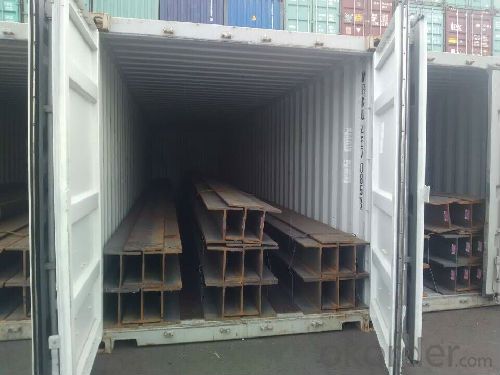
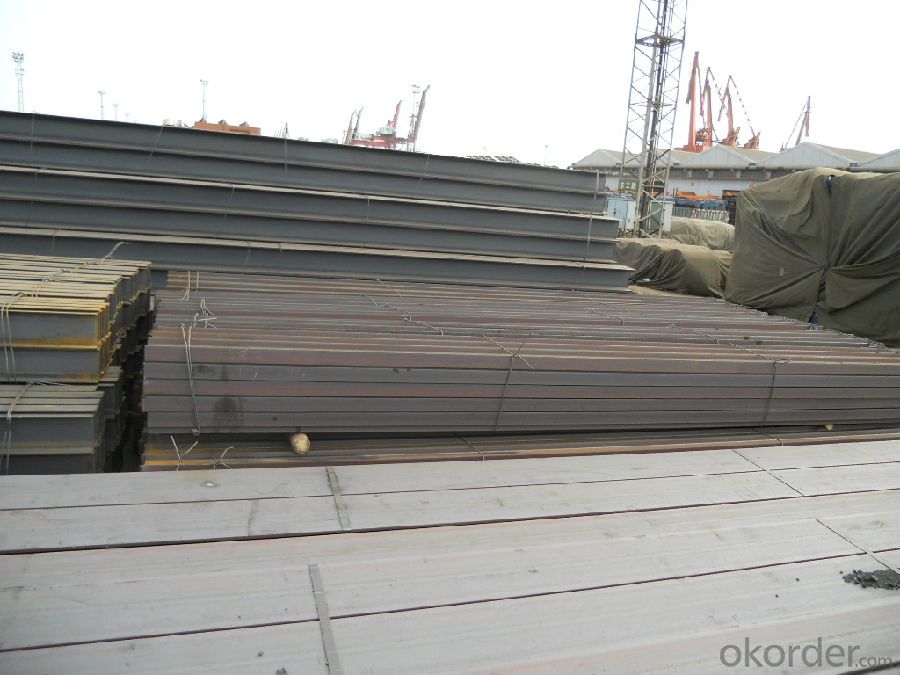
- Q: How do steel H-beams perform in high-humidity environments?
- Steel H-beams are generally highly resistant to high-humidity environments. The steel used in H-beams is typically coated or galvanized, providing a protective layer that helps prevent corrosion. This coating acts as a barrier against moisture, reducing the chances of rust formation and degradation. In high-humidity environments, such as coastal areas or regions with high levels of moisture, steel H-beams are designed to withstand the conditions without significant deterioration. The protective coating on the beams ensures their longevity and structural integrity, even in the presence of moisture. However, it is important to note that prolonged exposure to high levels of humidity, along with other factors such as saltwater or chemicals, can still potentially lead to corrosion over time. Regular maintenance and inspection of the steel H-beams should be conducted to identify any signs of corrosion or damage and take appropriate measures to address them. Overall, steel H-beams are a reliable choice for structures in high-humidity environments due to their resistance to moisture and corrosion. Their robust construction and protective coating make them suitable for withstanding the challenges posed by such conditions, ensuring their long-term performance and durability.
- Q: Can steel H-beams be used for supporting railway structures?
- Yes, steel H-beams can be used for supporting railway structures. H-beams are commonly used in construction projects for their strength and durability. They are able to support heavy loads and provide stability, making them suitable for railway structures such as bridges, platforms, and support beams. The use of steel H-beams ensures the necessary strength and safety required for railway infrastructure, as they can withstand the weight of trains and the forces exerted on the structures. Additionally, steel H-beams are readily available in various sizes and can be easily fabricated and installed, making them a popular choice for railway construction projects.
- Q: Can steel H-beams be used in curved or arched structures?
- Curved or arched structures can indeed incorporate steel H-beams. Although these beams are typically used in straight and rigid applications, they can also be utilized in curved or arched structures through appropriate engineering and design. The malleability and adaptability of steel enable the creation of curved or arched beams by bending them to the desired shape. Nevertheless, it is worth mentioning that the bending process may necessitate specialized equipment and expertise to guarantee the structural integrity and safety of the curved or arched structure. Furthermore, the design and engineering considerations for curved or arched structures employing steel H-beams may deviate from those for straight beams, making it crucial to seek professional consultation to ensure the project's feasibility and safety.
- Q: What are the different types of connections used for steel H-beams to timber?
- There are several types of connections commonly used for steel H-beams to timber. Some of the most common types include bolted connections, welded connections, and connector plates. Bolted connections involve using bolts and nuts to fasten the steel beam to the timber, providing a strong and secure connection. Welded connections involve welding the steel beam directly to the timber, creating a fused joint that is also very strong. Connector plates are metal plates that are bolted or nailed to the steel beam and then connected to the timber using bolts or nails, providing a reliable and simple connection. Other types of connections, such as shear plates and split rings, may also be used depending on the specific requirements of the construction project.
- Q: Can steel H-beams be used in temporary structures?
- Yes, steel H-beams can be used in temporary structures. H-beams are widely used in construction due to their strength, durability, and versatility. They are commonly used in the construction of temporary structures such as scaffolding, temporary bridges, or support structures for temporary stages or platforms. Steel H-beams are designed to carry heavy loads, making them suitable for temporary structures that require stability and structural integrity. Additionally, their modular design allows for easy assembly and disassembly, making them ideal for temporary applications.
- Q: What are the deflection limits for steel H-beams?
- The deflection limits for steel H-beams are typically determined by engineering codes and standards. These limits are designed to ensure the structural integrity and safety of the beams under different loading conditions. In general, the deflection limits for steel H-beams are based on the span length and the type of application. For example, in building construction, the deflection limits are often specified to ensure that the beams do not have excessive sagging or bouncing, which can affect the overall stability of the structure. The deflection limits for steel H-beams can vary depending on factors such as the beam size, material properties, and the applied loads. However, a common industry standard is to limit the deflection to L/360, where L represents the span length of the beam. This means that the maximum deflection of the beam should not exceed 1/360th of the span length. For instance, if a steel H-beam has a span length of 20 feet, the maximum allowable deflection would be 20/360 = 0.0556 feet or approximately 0.67 inches. This limit ensures that the beam maintains its structural integrity and performs within acceptable parameters. It is important to note that these deflection limits may vary depending on the specific project requirements and the governing codes or standards in the particular region. Therefore, it is crucial to consult the appropriate engineering guidelines and consult with a structural engineer to determine the specific deflection limits for steel H-beams in a given application.
- Q: Can steel H-beams be used for swimming pool construction?
- Certainly, swimming pool construction can indeed involve the utilization of steel H-beams. These beams possess exceptional strength and durability, rendering them highly appropriate for effectively bearing the weight and pressure exerted by the pool's structure. They can be employed to establish the framework and support system required for the walls and floors of the swimming pool. Furthermore, the corrosion resistance of steel H-beams is a crucial factor in ensuring the pool's longevity and upkeep. Nevertheless, it is imperative to seek guidance from a professional engineer or contractor to guarantee that the steel H-beams are meticulously designed and installed in accordance with the precise prerequisites and regulations governing swimming pool construction.
- Q: Can steel H-beams be used in retrofitting existing structures?
- Yes, steel H-beams can be used in retrofitting existing structures. Steel H-beams are commonly used in retrofit projects to strengthen and support existing structures, such as bridges or buildings. They provide structural integrity and can be easily installed to reinforce and enhance the load-bearing capacity of the existing structure.
- Q: What are steel H-beams?
- Steel H-beams are structural beams made of steel with an H-shaped cross-section. They are commonly used in construction and engineering projects to provide support and stability to structures such as buildings, bridges, and platforms. The H shape allows the beam to withstand heavy loads and distribute weight evenly, making them ideal for carrying large amounts of weight over long spans.
- Q: How do steel H-beams perform in areas with high seismic activity?
- Steel H-beams are widely recognized for their superior performance in areas with high seismic activity. The structural design of H-beams allows them to effectively absorb and dissipate seismic energy, making them highly resilient to earthquakes. One key factor contributing to the excellent performance of steel H-beams in seismic areas is their inherent strength and stiffness. H-beams are made of high-strength steel, which can withstand significant forces and deformations without collapsing or losing integrity. This strength helps minimize damage to the structure and ensures the safety of occupants. Moreover, the shape of H-beams provides an added advantage in seismic regions. The horizontal flanges and vertical web of the beam work together to distribute the seismic loads evenly across the structure. This distribution of forces helps prevent localized stress concentrations and reduces the likelihood of structural failure during an earthquake. Additionally, steel H-beams can be designed to incorporate connections that offer enhanced seismic resistance. These connections are designed to allow for some flexibility and rotation, enabling the beams to accommodate the movement and deformation caused by seismic activity. This flexibility helps dissipate the seismic energy and minimizes potential damage to the building. Furthermore, steel is inherently ductile, meaning it can undergo significant deformation before failing. This ductility is crucial in seismic areas, as it allows the steel H-beams to absorb and dissipate seismic energy by undergoing controlled deformations. This ability to absorb energy helps protect the overall structure and ensures the safety of the occupants. In conclusion, steel H-beams are an excellent choice for areas with high seismic activity. Their strength, stiffness, and ductility make them highly resilient to seismic forces, enabling them to effectively absorb and dissipate seismic energy. The design and shape of H-beams, along with their connections, further enhance their performance in seismic regions. Ultimately, steel H-beams provide a reliable and safe structural solution in areas prone to earthquakes.
Send your message to us
Hot Rolled H Section Beam
- Loading Port:
- China Main Port
- Payment Terms:
- TT or LC
- Min Order Qty:
- 100 m.t.
- Supply Capability:
- 10000 m.t./month
OKorder Service Pledge
OKorder Financial Service
Similar products
Hot products
Hot Searches
Related keywords



